Miranda Lichtenstien
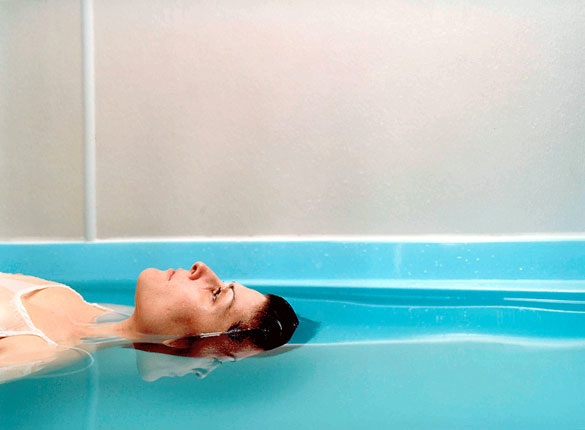
Still image of the print Floater a part of The Searchers series, 2005-2007
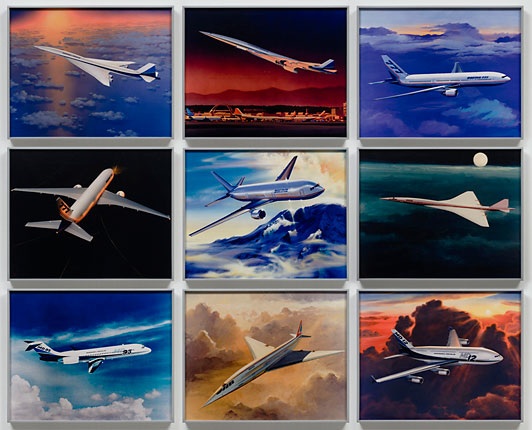
Still image from the print 9 Planes – 5 Unrealized 2007
Notes taken from an artist talk on September 20th, 2010 at MICA:
After graduate school at Cal Arts; Miranda had a crisis and stopped making photos. Attempted sculpture and moved to New York. She became an Interview Magazine photo editor. 2-3 months later she quit because she had little time to develop her craft as an artist. Miranda then thought about systems: 1997, took nocturnal photos of Connecticut. Struck by the paradox of people setting up their homes as inviting and then having security lights as well. The theatricality was interesting. The focus changed from the architecture to the environment and how it engulfed the home.
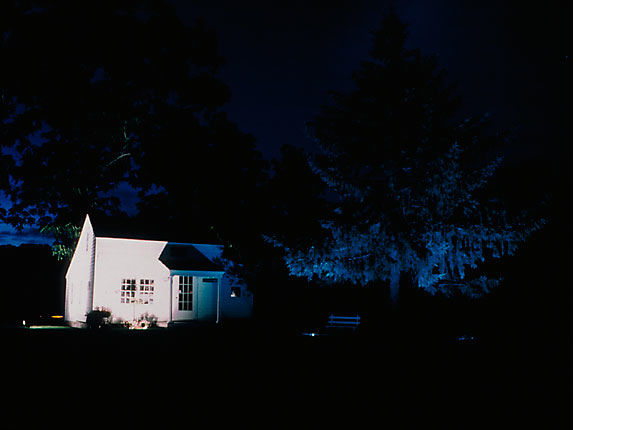
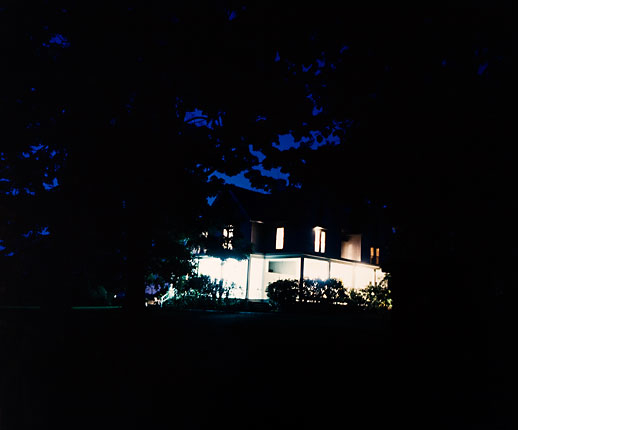
Danberry Road series 1997-1999
Note on “Danberry Road” series:
The idea of taking an image with long exposure was able to show the unseeable.

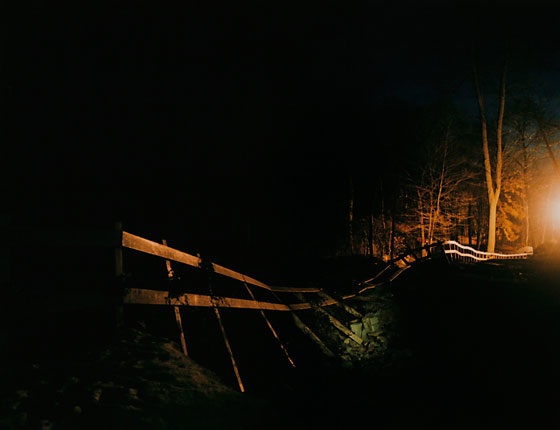
Lover’s Lane series, 2000-2001
Note on “Lover’s Lane Series”:
10 artist were chosen to respond to the Fairfeld archive. Police report was constantly referring to youth parties at night being broken up. The people weren’t of interest, but the sights where. Miranda tends to work serially, and topographically. Find the subject matter through physical exploration.
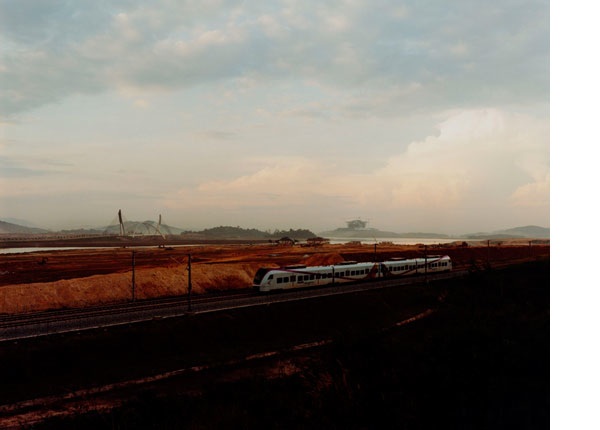

Cyberjaya series, 2000-2001
Note on “Cyberjaya” series:
The city being built in the late 90′s called “Cyberjaya” was a city made to make it possible to live ‘with nature’ and technology. Miranda was able to finance her way by pitching a story about the city to a magazine. She went there with no real plan. This city is located in SouthEast Asia. The environment had a great sense/tension of either being destroyed or being created. A failed utopia. This series also became a challenge due to the more documentary elements within the photographs that Miranda wasn’t use to having. She also went back and visited Thailand and heard about an English garden in the middle of the rainforest, which was completely counter to the indigenousness life-forms there. The carving out of the environment that ‘isn’t suppose to exist.’
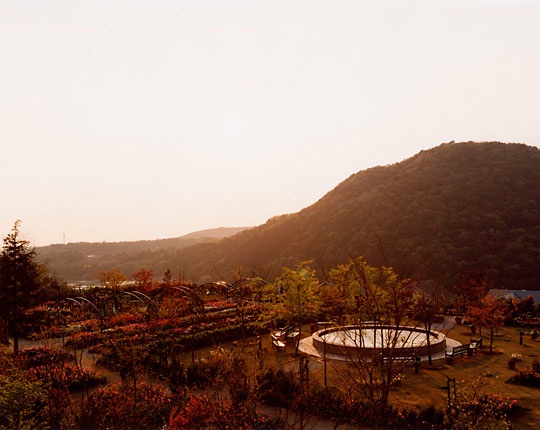

Givery series, 2002-2003
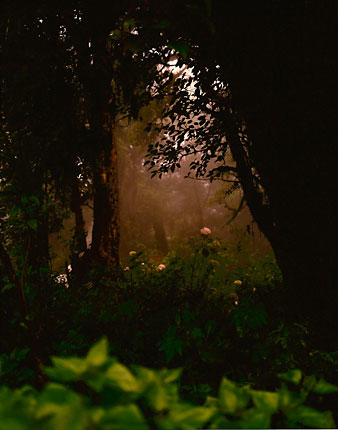
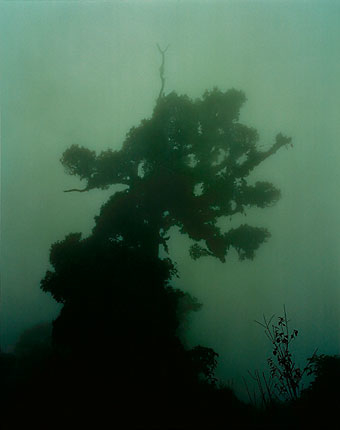
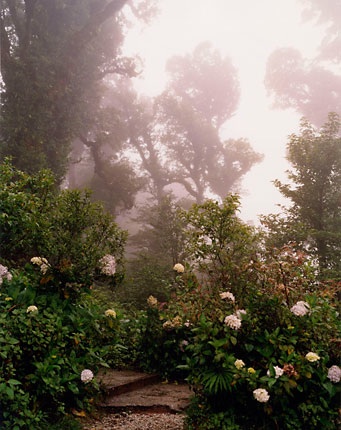
ThinAir series, 2003
Note on “ThinAir” series:
After the ThinAir series, Miranda was asked to do a residency to Monet’s Garden. A lucky opportunity, but also it is the most photographed garden in the world. Again, this system (the garden) was a complex situation because it took 30-40 gardeners and hundreds of plants had to be replanted to maintain it’s ‘natural’-look. Instead of focusing on the plants, she wanted to focus on this system of maintenance and photographed the instruments that produce Monet’s Garden. Miranda wanted to then shift from presentation to representation. Taking more images of the flowers in the garden and placeing them in a still-life arrangement. Carvaggio being an influence, the plants had their shadows painted.

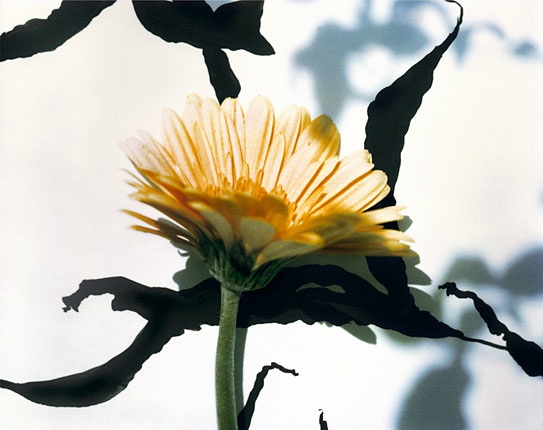
Enlarged Polaroids series, 2006
Note on “Enlarged Polaroid” series:
It was after this that Miranda wanted to do a series with the figure. She took notes of people wanting a way to reach spirituality. This was all at the same time as she was undergoing hypnosis to get over her own fear of flying. How does one imagine a space? This spiritual attempt was of interest; not the portraits.. The attempt at an altered-state.
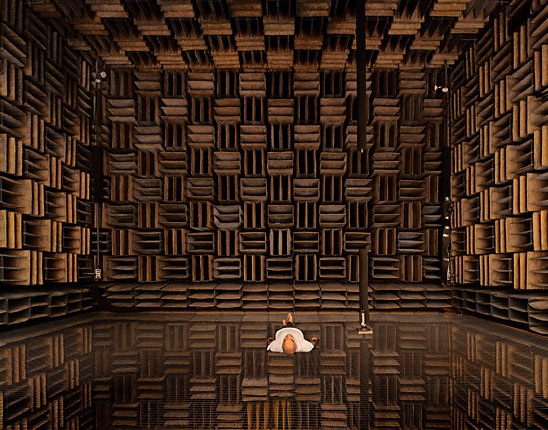
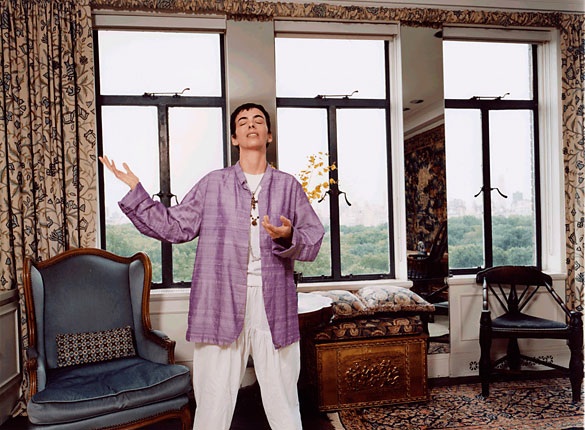
The Searchers 2005-2007
Note on “The Searchers:”
“Seeing is Forgetting The Name of the Thing One Sees : A Life of Contemporary Artist Robert Irwin” – Lawernce Weschler Anti-sound chamber in New Jersey where Bell Labs originally was located. The only sound was of your own bloodstream and nervous system. This particular ritual process was interesting because it was where their spirituality met with capitalism. Within the series she began to photograph herself. First wrapped in a purple blanket to reference “Heaven’s Gate” (religious group). Then it lead to creating video work.
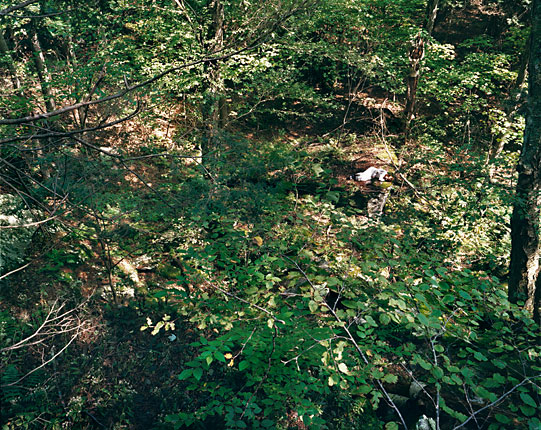

Still image of the installation: (1) Everything Begins and Ends at Exactly The Right Time Single-Channel Video (9:05) 2007
Excerpt of video : everything-begins-and-ends-at-exactly-the-right-time
Note on “Everything Begins and Ends at Exactly The Right Time” :
The film referenced was “Picnic At Hanging Rock.” At the core of the plot, 3 girls in Australia walked away from a picnic and were never found again. The main character is named ‘Miranda’ and it affected Miranda Lichtenstein a great deal. A series of commerical photos of plans in mid-flight called “9 Planes – 5 unrealized” – again referencing failed utopian ideals.